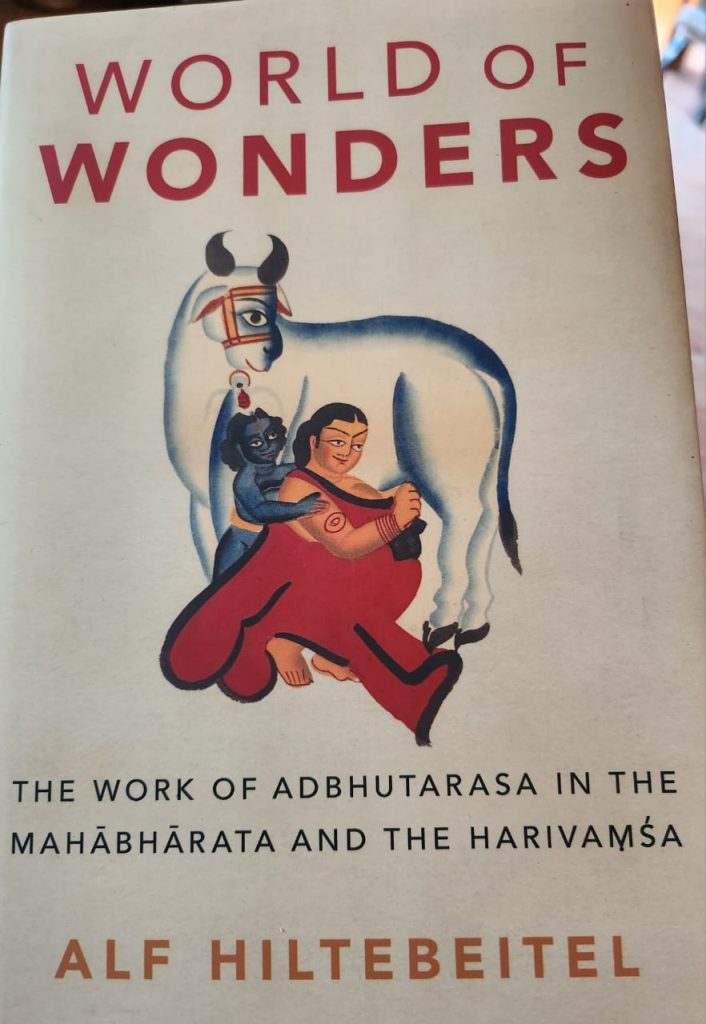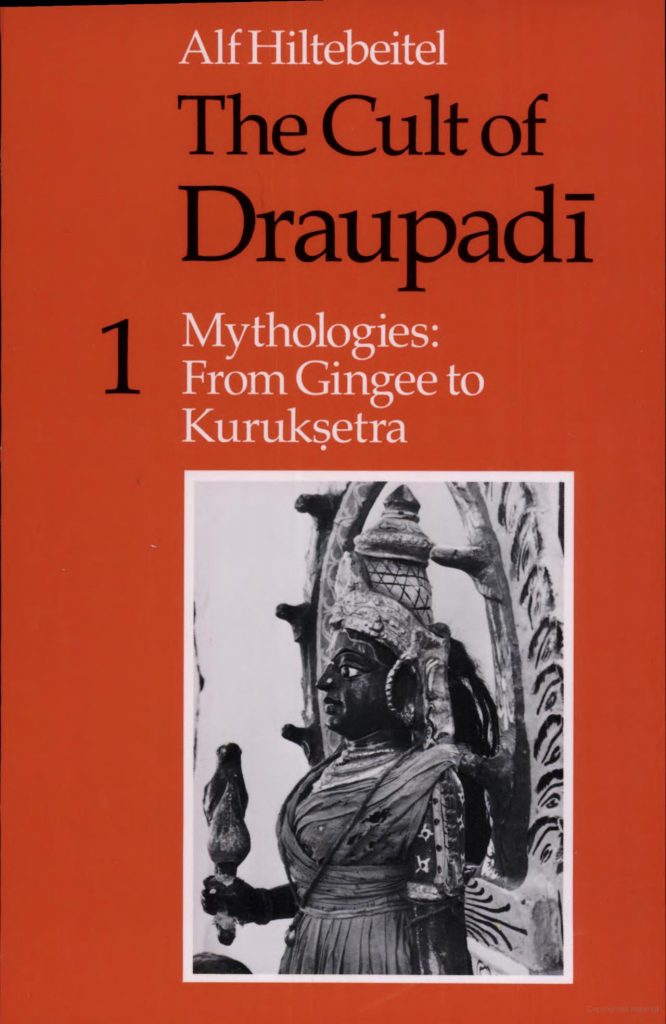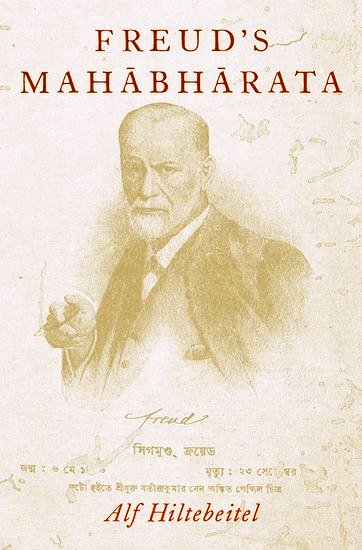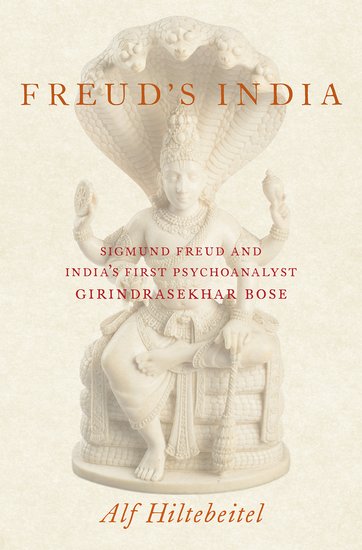Alf Hiltebeitel: World of Wonders: The work of Adhbutarasa in the Mahabharata and the Harivamsa. Oxford University Press, 2022, pp. 343.

When Akbar commissioned a Persian rendering of the Mahabharata (MB), he named it Razmnama, the Book of War. Centuries earlier, however, the Kashmiri aestheticians had argued that the dominant flavour (“rasa”) of MB is shanti, peace, with its stable emotion (“sthayi bhava”) of “vairagya”, detachment. Alf Hiltebeitel, the most prolific scholar on MB, who passed away in January 2023, presents a challenging thesis in his most recent foray, namely that neither the heroic (“vira”), as generally presumed, nor peace (shanti), but rather wonder (“adhbhutam, ashcarya”) is the primary flavour along with its stable emotion of surprise (“vismaya”). He is building on a realisation recorded in the last chapter of his earlier book, Freud’s Mahabharata, about the replenishing of Draupadi’s garment (referring to it anachronistically as “sari” repeatedly) being termed the greatest wonder in the world, “adhbhutatamam loke”. His search of the electronic text for the cluster “adbhutam-ashcharya-vismaya,” in MB and the Harivamsha (HV) confirmed the preponderance of the wondrous and showed that HV is part of the epic, not a mere appendix. He finds roughly 592 occurrences of “adbhutam-ashcharya” and 339 of “vismaya-vismita” distributed fairly evenly across both HV and MB. It is this dominant “rasa” that makes for the unity of the epic.
Hiltebeitel points out that the last three books of MB, with a total of eighteen chapters (like the Gita’s and the 18 books ot the epic), expose us to a series of rude shocks, presenting “unexpected outcomes”. The deaths of Krishna and Balarama, the submergence of Dvaraka, the looting of Arjuna’s caravan that destroys his heroism, Yudhishthira’s condemnation of dharma and the gods after his vision of hell and Janamejaya’s last question are analysed in detail. After Vaishampayana has explained that every hero (the women are not mentioned) merged into his original identity, Janamejaya was highly astonished (“vismito ‘bhavad atyartham”). The dominant flavour “wonder” and its stable emotion “surprise” are repeatedly evoked. The epic ends with the “Bharata Savitri” of the concluding statement by Vyasa “of wondrous deeds” to his son Shuka.
Varying perceptions about MB existed contemporaneously with the Kashmiri aestheticians of the 9th and 10 centuries CE. The first regional retelling of MB saw it as a heroic narrative, which is why Peruntevanar made Krishna his hero in the Tamil Paratavenpa (9th century CE) and Pampa had Arjuna crowned king at the end after Yudhishthira’s abdication in the Kannada Vikramarjunavijaya (10th century CE). Hiltebeitel finds that the “adbhutam” clusters are fairly evenly distributed in both MB and HV, missing only from Book 17 (the Great Departure). He concludes that the element of surprise is as evident as the didactic and other elements like Krishna and the divine plan, Vyasa’s role, the snake sacrifice, the ending of Janamejaya’s tale, Sauti and Shaunaka.
The two lists of contents identify sections as “wondrous”, not referring to any other “rasa”. Vyasa’s miraculous summoning of the dead in Book 15 is described as exceptionally and uniquely wondrous, while Books 5, 8 and 4 are called particularly “adbhutam”. Before Hiltebeitel, no had one noted these. Analysing the occurrences in each book he finds that Book 3 (Forest Exile), is the most wonder-laden book. Among the four war books, the largest wonder-cluster occurs in the Book of Drona while the Book of Karna is the only one of them to be described in the list of contents as “full of meanings and wonders” and to devote an adbhutam-cluster to Karna. In the Bhishma Parvan they are applied to Arjuna; in the Mokshadharmaparvan they occur in the Shuka story and the Narayaniya, and in the Anushasana Parvan in the Uma-Maheshvara dialogue.
In most of the wonder passages the focus is mostly on the three Krishnas: Krishna (Books 5-9), Vyasa (Book 1, alternating with Krishna in Books 10-13 and dominating in 14-15, 17-18), Krishna (Book 16) and Draupadi (end of Book 1 to Book 4). The others focussed upon are Arjuna, Karna, Bhima and Shiva. It is the three dark Krishnas who represent, writes James Fitzgerald, “wondrous realities of the world.”
Most episodes in Book 14 (the horse-sacrifice) have the wondrous quality. Vyasa’s pupil Jaimini’s version of the book is chock-full of magic and marvels, which is possibly why Akbar chose this to be translated into Persian for his Razmnama instead of Vyasa’s original composition and why regional Mahabharatas often do the same. This book culminates in the utterly surprising debunking of the horse-sacrifice by the episode of the mongoose. This Ashvamedha Parva is surpassed by the “very great wonder” of Book 15, as the list of contents describes the Forest Ashram. Here Vyasa not only conjures up all the dead heroes, but also gets all the widows to commit suicide in the river to meet their husbands, ridding the new monarchy of the sound of endless lamentation Much earlier he had made his mother and two sisters-in-law leave the world too. Nowhere in any epic world does the epic’s composer kill off so many of his characters himself.
Hiltebeitel commits a major mistake in glossing Satyabhama as Kamsa’s sister (p. 259). On p. 289 the printer’s gremlin is very much in evidence (“Virad”, “Vior”, “vita”, “Vi”, “amring the en”, “Vieap’s” etc.), p. 292 (“amatamanthana”) and footnotes 161 (“collerium”) and 162 (“Markakrsnadeya”). Footnote 191 refers to “Haberman” who is missing from the references.
At the very beginning of HV Shaunaka praises the MB for its extremely wondrous deeds and amazing discourses. HV is replete with amazing revelations of Krishna’s divinity to Akrura et.al. that tie-up with Narada’s visions in MB’s Narayaniya. Hiltebeitel notes that the 36 clusters of surprise and wonder in HV “speak the same language as the MB”, not that of bhakti rasa. Both works stress “devotion to the vigorous heroic deity in the same world of wonders and not on his being at the centre of the devotions of his parents, sons, friends, lovers, or admiring sages.” It is by looking at MB and HV as works of literature and not primarily as theological and ethical texts that their wonders and surprises work, hinting at “a below-the-surface sense of sacrificial beauty.”
Hiltebeitel explores this aspect through the conflagration set off by Krishna’s Vaishnava energy during his ascesis and by that of Shiva when Uma covers his eyes, that consume life on the Himalayas. The same Vaishnava tejas decapitates Shishupala, whose energy merges into Krishna. The production of amrita by churning the ocean that destroys all life on Mount Mandara, mingling their “rasas” and by the Nara-Narayana duo killing asuras is analogous to this. In HV the acme is Krishna uplifting Mount Govardhana and simultaneously becoming the mountain as Indra drenches it, just as he did Mount Mandara. The Govardhana incident would have been a far more appropriate cover than the Kalighat painting depicting Krishna with Yashoda milking a cow. Hiltebeitel shows how HV is original in “thematizing an aesthetic of sacrifice” in which the Earth becomes “sacrificially beautiful…it is through her that all forms of life and death flow meaningfully together.” The Harivamsha Parva closes emphasizing that Krishna is the sole wonder and that all wonders emerge from Vishnu, the most blessed. HV is as much an adbhutarasa text as MB and is part and parcel of the epic.


